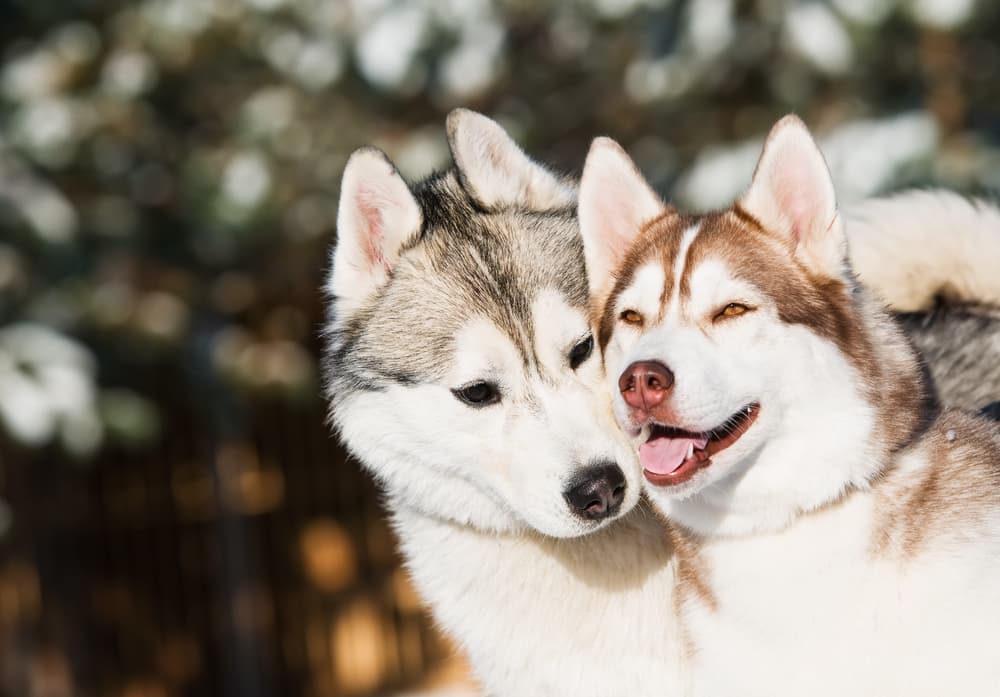The Sibe is a medium-sized, compact sled dog with great endurance. They were bred to work in packs, dragging light loads at relative speeds over immense frozen areas. Sibes are dignified, graceful, friendly, and meticulous. They are renowned for their almond-shaped eyes, which are blue or brown, sometimes one of each.
Their beautiful, thick coat comes in various colors, from pure white to black, with striking facial and body markings, including coppers and reds. They have a clever, sociable expression but are also mischievous, which is a strong character trait. Born as pack dogs, they love family life and usually get on well with other dogs. However, their energy makes chasing small animals irresistible, so a secure running space is essential.
Overall, they are naturally clean, with minimal doggy odor. Sadly, because many people fall in love with the wild nature of the breed, they aren’t aware of their complex traits. Hence, many Sibes end up in shelters. Siberian Huskies need at least 30-60 minutes of daily exercise to prevent boredom but should not be exercised in hot weather. In addition, their long and silky coat requires constant brushing, especially when it comes to grass awns which are very popular during the summer in the Mid-South.




















